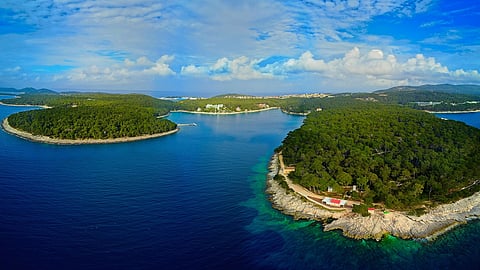

Renewable energy figures big on the decarbonisation agendas of six European Union (EU) islands that were published as part of their clean energy transition. The six islands were selected from the Clean Energy for EU Islands Initiative of the European Commission in February 2019 that was established in the context of the Clean Energy for all Europeans Package (see Clean Energy Package Formally Cleared).
This initiative is designed to harness the clean energy potential of European island communities and help them reduce their energy imports as well as make use of locally available renewable energy sources and curb their GHG emissions.
The decarbonisation pathways have been developed by:
as tailored to their individual needs and with a strong focus on citizen engagement.
Seeing islands as the 'lighthouses for global climate action', EU's Director-General for Energy, Ditte Juul-Jørgensen said, "Whether it's through more wind power, retrofitting homes, moving towards electric mobility, decarbonising maritime transport or deploying renewable energy for domestic hot water and heating, the decarbonisation solutions showcased by these six pilot islands will veer them towards higher energy efficiency, more renewables and low-carbon pathways".
Major highlights of the goals these islands have developed are as follows:
Cres-Losinj archipelago: This largest archipelago in the Adriatic is made up of 34 islands, islets, mounds and reefs. While it has a population of 10,000, during summer months it exceeds 33,000.
It aims to complete its decarbonisation by 2040 for which it plans to have an installed PV capacity of 22.5 MW, increasing from today's 714 kW to provide half of its electricity consumption to power electric vehicles, achieve energy efficiency through building retrofits, rooftop solar PV deployment and the like.
Culatra: A sand bar island without paved roads, Culatra in Algarve region of Portugal has a permanent population of only 1,000 people who depend on fishing and tourism for their livelihood. Most part of the electricity comes through interconnection with the mainland provinces for Culatra village while some homes in Farol and Hangares are completely energy autonomous. All of the transport is currently fossil fuel powered.
Before 2030, it aims to become 100% renewable energy powered and all of this capacity to be managed by the local community. Solar PV is included as an important part of this transition process but not clear how much it sees being deployed.
Aran Islands: Comprising three islands on the west coast of Ireland, these islands are well connected to the mainland through ferries and an airstrip with most part of the electricity coming from the mainland. In recent years, the islands have had to face blackouts due to problems with undersea cables which makes it all the more imperative for them to become energy independent.
The energy transition roadmap includes solar thermal, heat pumps, wave/tidal energy, wind and solar PV to become self sufficient in electricity as it sees itself becoming self-sufficient in clean, locally owned energy.
Salina: The second largest of the Aeolin islands, Salina is a volcanic island enjoying World Heritage status. Not interconnected with the main islands for electricity purposes, it has two diesel power plants of 8.2 MW capacity with some amount of solar thermal and biomass heating.
As per its decarbonisation plan, Salina wants to become a sustainable island with an energy generation system being a mix of solar PV along with solar thermal, heat pumps, wave energy, wind, geothermal, biomass and electricity storage capacity. It also wants to decarbonise its transport and make buildings energy efficient.
La Palma: Another volcanic island, La Palma is well connected to mainland Spain and Europe through plane and to other Canary Islands through boats. Total installed power capacity of La Palma is 118 MW of which only 10% is renewable and most of the energy generation is through 10 diesel engines and a gas turbine.
The island aims to go 100% renewable with a combination of clean technologies, energy storage and auto-consumption that involves over 100 local associations to support its transition.
Sifnos: Part of Cyclades Islands of Greece, Sifnos mainly depends on diesel engines for its electricity supply even though it has 335 kW of rooftop solar capacity installed. Another 1.26 MW comes from two wind turbines installed in March 2019.
The island will aim for 100% renewable energy generation system with its denizens and private investors to partly own the projects and a decarbonised transport system. Main electricity supply will come from wind and solar power which will also be used for hydrogen storage, pumped hydro storage and electricity storage.
With these six islands providing a lead, a number of other EU islands are also in the process of developing their clean energy transition agendas likely to be published in 2020.
.png?w=50&fm=png)